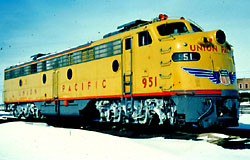ALL TIME KEEPING DEVICES depends on counting a regularly-repeated phenomenon. The earliest time keeping devices were based on daily , monthly, or yearly cycles of the sun or moon. Most modern clocks are based on repeated mechanical or electrical oscillations (vibrations). The more frequent the vibrations , the greater the potential accuracy of the clock. The crystal in a quartz watch typically vibrates at 32,768 hertz (32,768 times in a second), so it keeps better time than a pendulum clock, whose pendulum typically swings twice a second. The most accurate time keeping devices are atomic fountains, which are based on oscillations of caesium atoms. Global communication technologies, such as computer networks and broadcasting, rely on the world using one accurate time standard. This is called UCT (Universal Coordinated Time) , and is based on the average time signal received from over 200 atomic clocks world wide. The more we rely on high technology for precise time keeping, the more vulnerable we become to problems with that technology, for example the bug that threatens to strike at the beginning of the new millennium.
PENDULUM CLOCK
In the 16th century, the Italian scientist Galileo Galilei used the regular swing of a pendulum to measure periods of time. He suggested that a pendulum could be connected to the hands of a clock to turn them in regular steps.
THE ATOMIC FOUNTAIN
At present , the most accurate timekeeping devices is the atomic fountain. It was developed by Nobel prize winning scientists in the early 1990s and is far more accurate than a standard atomic clock, such as NIST-7. The atomic fountain enables us to measure time with greater accuracy, mainly because it uses cooler , slower-moving atoms than the atomic clock. Atomic fountain devices are accurate to within one ten-billionth of a second per day.
HOW THE ATOMIC FOUNTAIN WORKS
1) Three pairs of laser beams (AB,CD,EF) trap and cool a ball of several million caesium atoms, all in one of two energy states.
2) The laser are detuned slightly to slowly launch the bell upward through a field of microwave radiation.
3)As the atoms fall through the microwave cavity, many of them are "EXITED" and change energy state.
4) A detector unit measure the fluorescence of the atoms and calculates how many have changed state.
5) the microwave frequency is fine-tuned to excite a greater proportion of the atoms to change energy state.
6)When this proportion is greatest, the microwave frequency is closest to the true resonant frequency of the atom.
MEASURING THE SECOND
Atomic devices keep time using caesium atoms, which flips between two energy states when they are hit with microwave radiation of a specific, fixed frequency. One second is defined as exactly 9,192,631,770 oscillations of this radiation. Atomic clocks measure time by producing radiation with a frequency as close as possible to the resonant frequency of the cesium atom, and then counting the oscillations.
NIST-7 ATOMIC CLOCK
This laser forms part an early-1990s atomic clock, developed by the US National Institute of Standard and Technology. At that time,the clock was the most accurate timekeeping device in the world, precise to within one billionth of a second per day (one second in three million years). Above, a scientist observe the laser as it "excites" caesium atoms. The atoms oscillate between two energy states, and the clock counts the oscillations.
THE MILLENNIUM BUG
The millennium or Y2K (year 2000) bug is a threat to computer systems that store dates using just two digits. Thus, the year after 1999 would be represented as 00, which could be interpreted as 99 years earlier rather than one year later. Systems that store dates in this way are danger of crashing on 1 January 2000. Although th Millennium bug may affect the personal computers, the greatest threats come to embedded systems - custom-built that are used in vital service industries such as banking, utilities, transport, telecommunications, the medical sector, and air traffic control. Severe problems could occur if equipment affected by the bug is not modified. The true extent of the problem will, however, only be known on 1 January 2000.

















_hires.jpg)